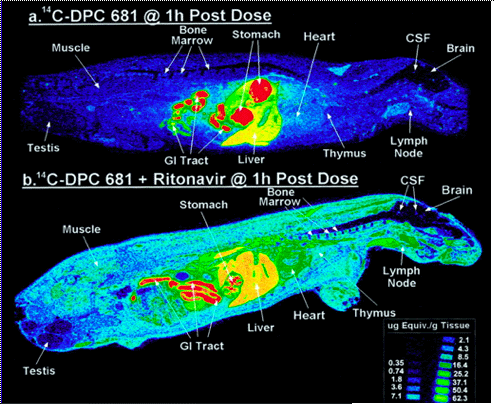| |
HIV-Associated Neurocognitive Disorders in the Era of Potent Antiretroviral Therapy: risk factors/prevalence, CSF HIV-RNA, HCV, ART PK/penetration, assessment tools
|
| |
| |
Reported by Jules Levin
Scott Letendre, M.D.
Associate Professor of Medicine
University of California, San Diego
11 September 2009
49th Interscience Conference on Antimicrobial
Agents and Chemotherapy - Complications Workshop Pre-ICAAC
San Francisco, California
In this slide presentation Scott Letendre reviews:
- Model of HIV neuropathogenesis
- Definition of neurocognitive disorders and sliding scales of disorders
- Prevalence of neurocognitive disorders in USA and globally
- Consequences in daily living for patients with cognitive disorders
- Risk factors for cognitive disorders
- HIV viral loads in CSF compared to plasma and disconnect, where CSF viral load can be detectable despite undetectable plasma HIV viral load
- The effect of nadir CD4
- HCV and the brain
- PK of ART drug penetration: PIs, NNRTIs, NRTIs
- Scoring penetration effectives of HAART and specific ARTs (more research needed)
- Tools to assess patient functioning and neurologic disorders, patient survey assessments, brief neurological testing that can be performed in the clinic and in studies
Development of HIV-associated dementia (HAND) is associated with HIV, insulin resistance, hepatitis C, bacterial translocation, and a history of cocaine or methamphetamine use. Patients with low CD4 nadir are at greater risk for developing HAND, and patients with HAND are more likely to have higher hsCRP levels (inflammation).
4% of patients in a study (CHARTER), had detectable viral loads in CSF (>50 c/ml) even though viral load was undetectable in plasma. But, 31% with detectable viral load in plasma had detectable CSF viral load (>50 c/ml), giving I think a suggestion of the magnitude for potential cognitive impairment that can occur for patients with detectable plasma viral load and the importance and implications of achieving undetectable plasma viral load. Of note, 26% of patients with >2 copies/ml in plasma had > 2 copies in CSF and this was associated with higher scores of cognitive impairment.
HCV & AIDS appears to make neurologic impairment worse, see table below.
In graphs below the CSF penetration of PIs, NNRTIs and NRTIs are shown including the CSF penetration of darunavir and raltegravir presented at ICAAC 2009 in September 2009.





"cognitive impairment in HIV is a significant source of disability in daily life. Thus, patients with diminished NP abilities were more likely to report cognitive problems, had objective difficulty with standardized tasks assessing ability to manage complex medication regimens, manage finances, and prepare meals, and showed a higher rate of job loss or diminished performance at a jobs they previously were able to perform well." Scott Letendre










This slide depicts the components of the blood-brain barrier. These include interparenchymal capillaries, with unique tight junctions preventing the easy passage of substances from the intravascular space to the CNS. One also sees the surrounding structures, including astrocytic foot processes.





The data above and the reported RTV concentrations suggested that both the Pgp and CYP3A4 inhibition by RTV may play a significant role in enhancing the systemic and tissue exposure to DPC in humans.
Solon EG, Balani SK, Luo G, Yang TJ, Haines PJ, Wang L, Demond T, Diamond S, Christ DD, Gan LS, Lee FW. Related Articles, Links
Interaction of ritonavir on tissue distribution of a [(14)c]L-valinamide, a potent human immunodeficiency virus-1 protease inhibitor, in rats using quantitative whole-body autoradiography. Drug Metab Dispos. 2002 Nov;30(11):1164-9.
Huisman, M., Smit, J., Hoetelmans, R., Wiltshire, H., Beijnen, J., and Schinkel, A.
The role of P-glycoprotein in oral bioavailability, brain and fetal penetration of the HIV protease inhibitor saquinavir. in Fifth International Congress on Drug Therapy in HIV Infection. 2000. Glasgow, United Kingdom.










Letendre S, et al. 13th CROI, 2006, Abstract 74

Letendre S, et al. 13th CROI, 2006, Abstract 74
Fig 2. Reduction (improvement) in GDS among subjects with and without suppressed CSF HIV RNA viral load at followup. Box-and-whisker plots show the median (center line), interquartile range (box), and 5th and 95th percentiles (whiskers). GDS = global deficit score; CSF = cerebrospinal fluid; HIV = human immunodeficiency virus.


Letendre S, et al. 16th CROI 2009, Abstract 484b




















|
|
| |
| |
|
|
|